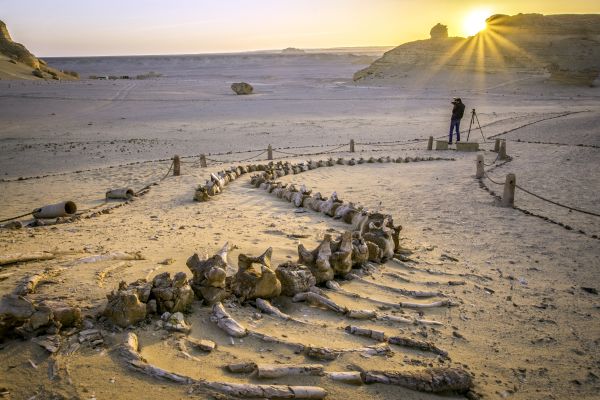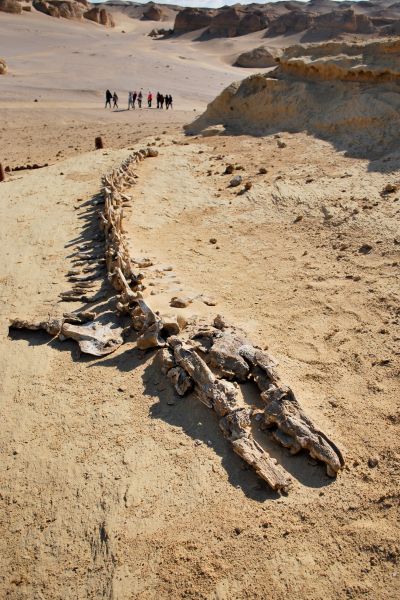Whales in the desert?
- POSTED ON: 28 Oct, 2024
- TOTAL VIEWS: 160 Views
- POSTED BY: R. Krithika | Text: Rohini Ramakrishnan
- ARTICLE POINTS: 150 Points

Imagine a huge site full of fossils from another time. That’s Wadi al-Hitan, also known as Whale Valley. Located in the deserts of western Egypt, this UNESCO World Heritage Site is known for its fossils of the earliest whales. The archaeoceti, an extinct sub-order of whales, is a crucial link in the story of how the whales evolved from a land animal into the marine mammal that we know of today.
The area contains a huge number of fossils in an extremely well-preserved state. In some cases, even the stomach contents are available. Apart from early whales, the fossils of sharks, crocodiles, sea cows, saw fish, turtles and rays have been found allowing scientists to understand the environment and ecology of the area during this time.
First discovered in 1902-03, Wadi al-Hitan remained undisturbed for around 80 years because the area was difficult to reach. As four-wheel drives became available in the 1980s, there was a revival of interest and fossil collectors began to converge to the site. This led to the removal of bones and the Egyptian government brought it under the Wadi el-Rayan Protected Area to conserve the remains.

Over 1500 skeletons of marine vertebrates have been discovered in the valley, with whale fossils ranging from bones to complete and partial skeletons. The two most common are Basilosaurus and the Dorudon. Small hind limbs and teeth similar to that of carnivorous land animals are highlights of the fossils. Skeletons of three species of sea cow were also found showing features that are not seen in the modern animal. The site also contains the bones of Moeritherium, a primitive form of the elephant. The oldest fossil – of a pelican from the late Eocene period – was discovered in 2021. A large log full of tubular shipworm fossils can also be seen.
In an attempt to protect the valley, four-wheel drives are being phased out and replaced by camel rides or trekking by foot. Visitors are restricted to specific guided tours along prescribed trails. A public park, open to tourists, has walkways for people to walk on and view the fossils.
Fun fact

The Garet Gohannam mountains that lie behind the valley are known as Mountain of Hell because the setting sun throws an unearthly red light on the range.
Now that you’ve read all about the Valley of Whales, here’s an activity for you. These words all appear in the story. Can you place them in their correct place in the grid?